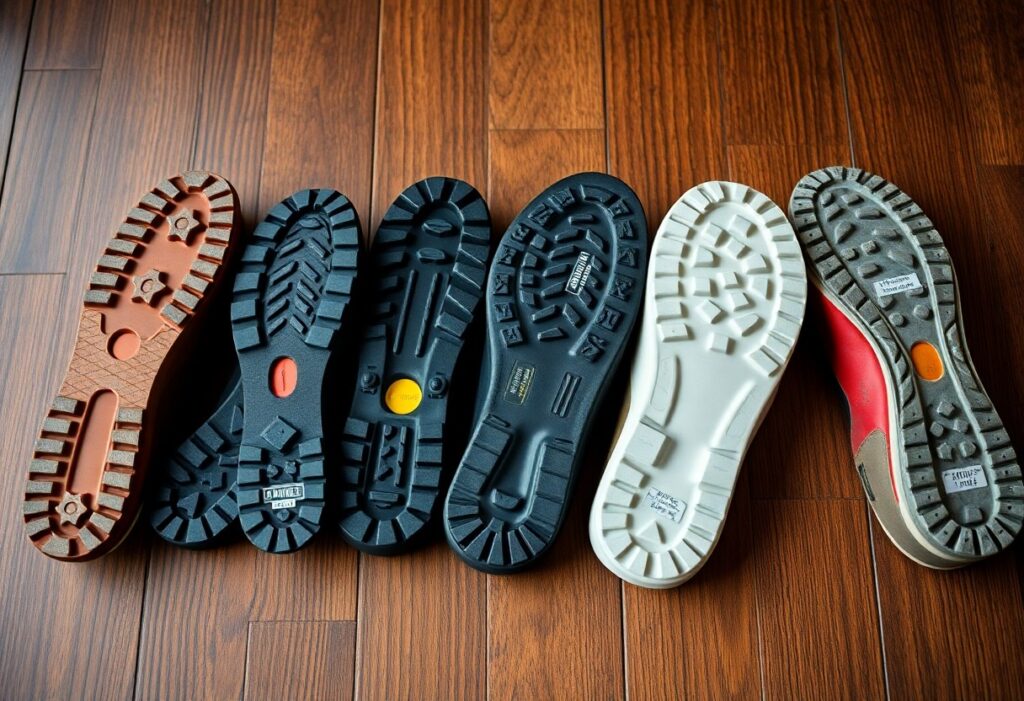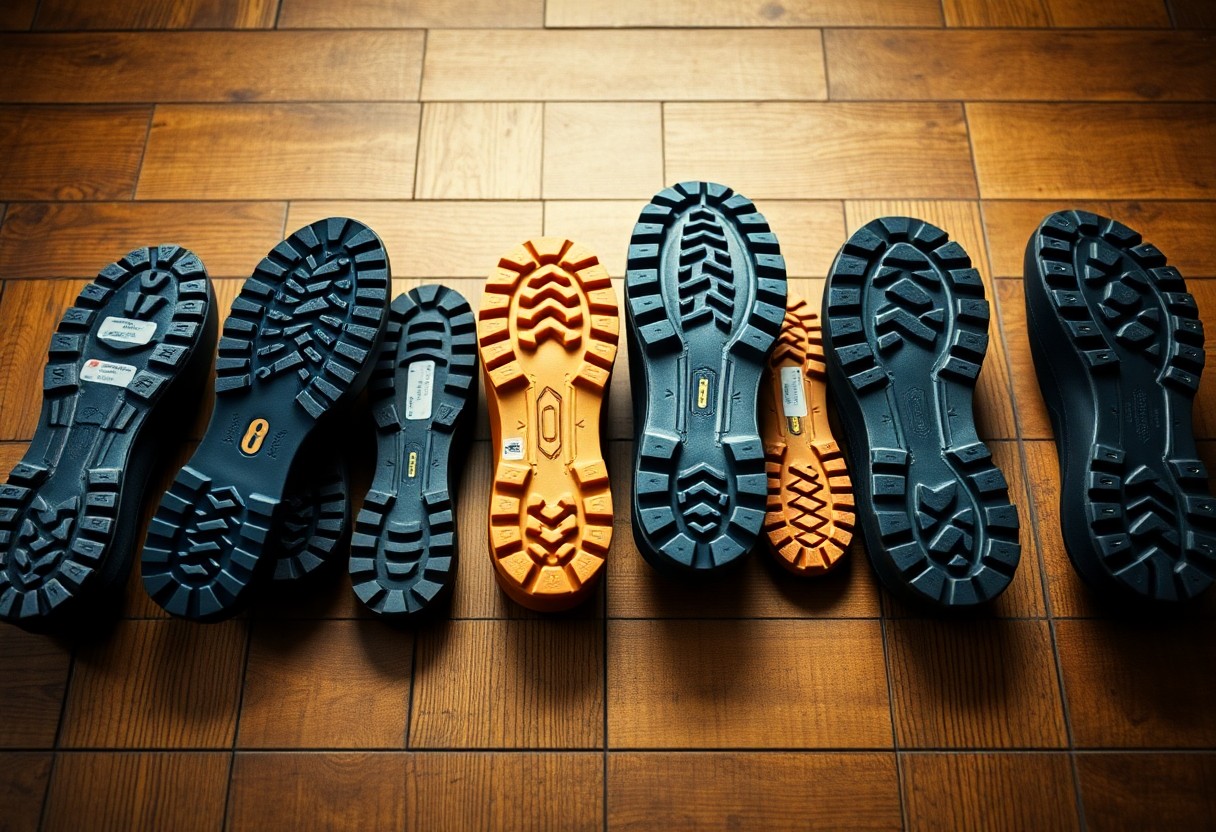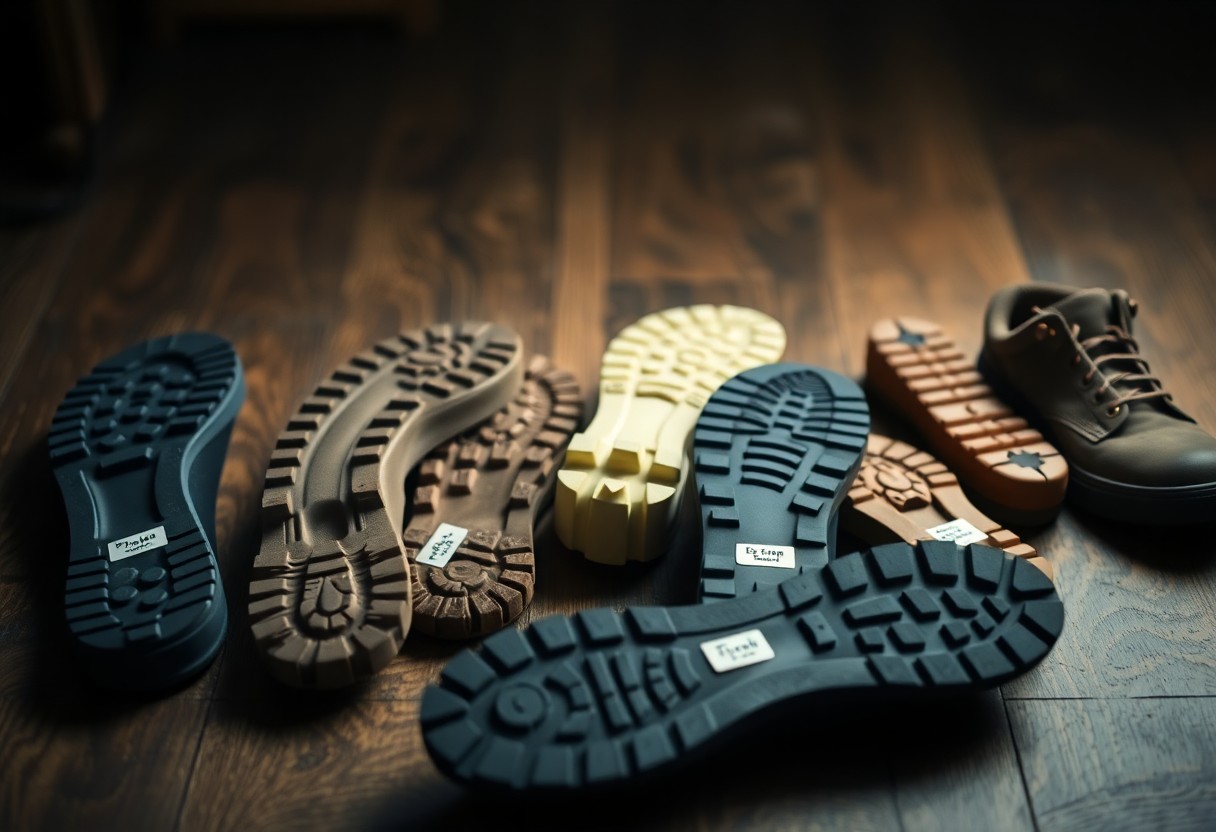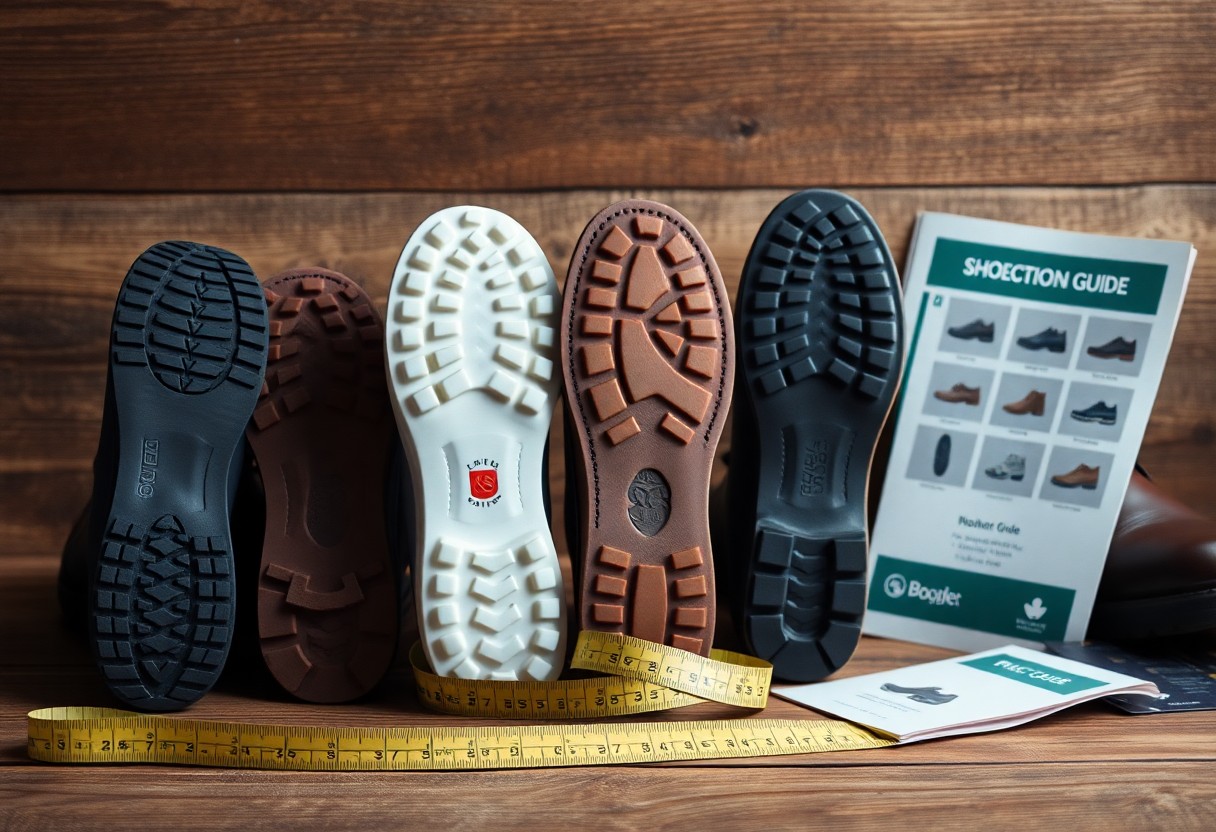
When choosing footwear, many individuals often overlook the crucial importance of shoe soles, yet this fundamental element greatly impacts both your comfort and safety. Selecting the right type of sole can be pivotal in achieving stable footing on slippery surfaces, preventing hazardous slips, and ensuring long-lasting comfort instead of rapid wear. From traditional leather soles to modern rubber compounds, each sole type offers distinct advantages tailored to specific uses. Options like single leather, double leather, rubber, and hybrid soles are specifically designed to meet different environmental demands and activities. This comprehensive guide is crafted to illuminate the defining features of various sole types and help you select the ideal choice to suit your unique requirements, be it for professional engagements, casual outings, or outdoor adventures.

Discover the Benefits of Leather Soles for Enhanced Footwear Performance
Your choice of leather soles can profoundly influence the performance and aesthetic of your footwear. These classic soles are well-known for providing superior breathability and natural comfort, as they adapt to the unique contours of your feet over time, allowing for a personalized fit that significantly enhances your walking experience. While they do require more maintenance compared to synthetic options, leather soles offer excellent ground feel, making them a preferred choice for formal events where sophistication is essential. By understanding the specific benefits associated with leather soles, you can make informed decisions that not only elevate your wardrobe but also enrich your overall walking experience with every step you take.
Enhance Your Style with Single Leather Soles for Elegant Dress Shoes
Soles made from a single layer of leather represent the most classic option for sophisticated dress shoes. These soles are crafted to deliver remarkable flexibility along with a polished look that elevates your style for formal occasions and gatherings. While they provide better breathability compared to rubber alternatives, it is important to take extra precautions when navigating wet surfaces to avoid potential slips and damage. By opting for single leather soles, you embrace a refined aesthetic while also reaping the comfort benefits that come with quality craftsmanship and a timeless design that remains relevant through the years.
Boost Footwear Durability with Double Leather Soles
With their construction of two layers of leather, double leather soles offer you enhanced durability and superior insulation against cold surfaces, making them an exceptional choice for a variety of climates. Although they may feel slightly stiffer than single-layer options, double leather soles provide greater protection for your feet in diverse conditions, ensuring comfort during extended wear. Their design guarantees that double leather soles will significantly outlast single soles, making them a wise investment for everyday footwear. They are particularly suitable for individuals with a heavier build or those who frequently engage in outdoor activities, although they do necessitate a longer break-in period to fully maximize comfort and performance.
By choosing double leather soles, you are selecting a solution that merges longevity with performance, ensuring your footwear can endure the demands of daily use while maintaining a stylish appearance that complements any outfit.
Optimize Footwear Performance with HAF (Half and Full) Soles
HAF soles, which incorporate single leather in the waist and heel alongside double leather in the forepart, provide you with the best of both worlds. This innovative design ensures extra durability where it’s most needed while preserving a sleek and elegant profile suitable for various occasions. The unique construction of HAF soles promotes balanced weight distribution and enhanced comfort, effectively protecting high-wear areas without compromising the refined appearance of the shoe. However, it is crucial to ensure your cobbler includes the correct heel compensation to achieve optimal balance and stability for your feet, significantly enhancing your overall walking experience.
Uncover the Versatility of Natural and Mixed Soles for Everyday Footwear
Natural and mixed soles offer a well-rounded mix of comfort and durability. These soles meld organic materials like cork, natural rubber, or leather with synthetic compounds to create adaptable and high-performance footwear solutions that cater to a variety of lifestyles. Your choice among the diverse natural and mixed soles should be based on your specific requirements regarding grip, weight, and weather resistance. Gaining insight into these factors will empower you to make informed decisions that align with your lifestyle and activities, ensuring your footwear meets your needs in every situation.
Experience Lightweight Comfort with Nitrile Cork Soles
In addition to traditional rubber options, nitrile cork soles present a lightweight alternative that offers exceptional durability without the burden of added weight. These soles, which combine cork with nitrile rubber, are 30% lighter than conventional rubber soles, making them a favored choice for American shoes and boots where comfort is paramount for daily wear. Available in both smooth and treaded patterns, nitrile cork soles are perfect for those who prioritize lightweight footwear without sacrificing performance. Opting for these soles allows you to engage in daily activities with ease and style, ensuring you feel fantastic with every step.
Enjoy Casual Comfort and Style with Natural Crepe Soles
Natural crepe soles, made from pure rubber, provide exceptional comfort thanks to their soft, cushioning properties that make them ideal for casual footwear. These soles offer varying levels of grip depending on the surface conditions you encounter, enhancing your walking experience. While crepe soles grant superior comfort for everyday wear, it is important to be aware of their limitations. Their soft composition leads to a wear rate that is approximately 40% faster than traditional rubber soles, and grip may become unreliable on wet surfaces. Therefore, while many users appreciate the comfort they offer, it’s essential to consider the likelihood of needing more frequent replacements to maintain optimal performance.

Explore the Unique Benefits of Rubber Soles for All-Weather Performance
When it comes to shoes and boots, rubber soles are renowned for providing superior grip and water resistance compared to leather counterparts. These soles shine in wet conditions, making them an ideal selection for everyday wear across various weather scenarios. Rubber soles not only offer excellent durability but also require less maintenance than leather options, despite potentially feeling warmer on your feet during hotter summer months. The practical advantages of rubber soles make them a sensible choice for those seeking reliable performance and comfort in their footwear selections.
Achieve the Perfect Blend of Style and Function with Rubber Topy Soles
Rubber Topy soles present an excellent compromise between leather and rubber soles, allowing you to enjoy the best of both worlds. You gain the classic look of leather soles while benefiting from improved grip and durability, which is vital for various activities. A thin rubber layer is adhered to a slightly sanded leather sole, effectively prolonging the lifespan of your footwear by up to 50%. This combination grants you the aesthetic appeal of leather without sacrificing functionality, making Rubber Topy soles a wise investment that harmonizes style with practicality in your footwear collection.
Experience Unmatched Style and Practicality with City Rubber Soles
By opting for city rubber soles, you attain a sleek, dress shoe appearance without sacrificing comfort or practicality. These thin rubber soles closely mimic traditional leather soles while providing better traction and waterproofing, making them suitable for various urban environments. Increasingly favored in modern dress shoes, city rubber soles not only enhance the visual appeal of your footwear but also improve durability compared to leather soles, resulting in less frequent resoling. Perfect for urban settings, these soles are well-equipped to handle concrete sidewalks and occasional rain, ensuring that you remain stylish and comfortable in any situation.
Enhance Footwear Durability with Dainite and Studded Soles
Among rubber options, Dainite and studded soles offer maximum durability and grip. Their unique studded design ensures dependable traction while maintaining a formal appearance, making them particularly appropriate for business casual footwear and dress boots. While Dainite soles are highly resistant to wear, it is important to note that they may become slippery in freezing temperatures. User experiences can differ, as some find them firmer than other types of soles. However, for everyday use in moderate conditions, these soles typically outlast traditional leather soles by 2-3 times, positioning them as an excellent choice for durability and performance that withstands the test of time.
Your Guide to Key Performance Features of Shoe Soles
Your choice of shoe sole can substantially influence your daily comfort and safety. Different sole types provide varying levels of grip, shock absorption, and flexibility, each serving specific purposes ranging from preventing slips on wet surfaces to reducing foot fatigue during prolonged walking. Understanding these performance features is essential in selecting the right sole type for your needs, enhancing your overall footwear experience and ensuring your feet maintain comfort throughout the day.
Assess Durability Factors in Sole Materials for Smart Choices
The lifespan of various sole materials can vary significantly based on their wear resistance. Typically, rubber compounds outlast leather soles by three to four times, while nitrile cork serves as a middle ground. Factors such as material density and tread pattern are critical in determining the longevity of your soles. Being aware of these durability factors empowers you to make cost-effective footwear choices that align with your specific lifestyle, ensuring you invest in soles that will meet your demands.
Understand Weather Resistance for Optimal Sole Performance
Aspects such as water resistance, temperature tolerance, and traction are vital in assessing how your soles perform under various conditions. Generally, rubber soles deliver superior grip in wet environments, while leather soles excel in dry climates due to their inherent properties. It’s crucial to recognize that temperature fluctuations can significantly impact sole performance. Some rubber compounds may become dangerously rigid in freezing conditions, while others retain flexibility. Your local climate should inform your selection: city rubber soles are optimal for mild wet conditions, while specialized winter soles are designed to enhance safety in snowy or icy environments, ensuring you make wise choices for your climate.

Your Complete Guide to Choosing the Right Shoe Sole
It’s vital to understand that not all shoe soles are created equal; your selection should align with your specific needs and preferences. The appropriate sole type can significantly influence your comfort, safety, and the longevity of your footwear. This guide is designed to assist you in selecting the most suitable sole type based on your lifestyle, activities, and environmental conditions, ensuring you make choices that genuinely enhance your everyday life.
Assess Your Daily Activities to Determine the Right Sole
When selecting a sole, key considerations include your daily activities and the walking surfaces you frequently encounter. In office settings, thin leather or city rubber soles are appropriate to maintain a polished appearance. Conversely, industrial environments benefit from thicker rubber or studded soles that provide improved protection and slip resistance. For outdoor activities, it’s essential to prioritize grip requirements and durability needs to ensure safety and comfort. Understanding your primary usage will help you narrow down the best options available, enabling you to make informed choices.
Evaluate Climate Factors to Ensure Optimal Sole Performance
In addition to weather conditions, variations in temperature can influence the performance of shoe soles. Consider these essential points:
- Wet conditions – rubber soles excel in providing grip and stability
- Cold weather – thicker soles deliver better insulation against the chill
- Hot climates – breathable leather soles are ideal for keeping feet cool
- Variable weather – hybrid soles offer versatility for changing conditions
Understanding your local climate patterns is crucial to selecting the most suitable sole type for your footwear, ensuring you remain comfortable regardless of the weather.
Furthermore, consider how different sole materials react to various weather conditions:
- Leather soles require special care in wet environments to maintain their integrity
- Rubber soles can become very hard below 0°C, affecting performance
- Nitrile cork provides a good balance in moderate conditions for everyday use
- City rubber soles offer year-round versatility for urban living
Being aware of these characteristics ensures your footwear will perform optimally in any season, providing the comfort and support you require.
Essential Maintenance Tips for Prolonging Shoe Sole Longevity
To ensure the durability and performance of your shoe and boot soles, regular maintenance is crucial. The lifespan of your soles greatly relies on proper care, which includes cleaning, drying, and applying protective treatments. Each sole material has its specific care requirements; for instance, leather soles demand waterproofing to prevent deterioration, while rubber soles benefit from routine debris removal to maintain their grip.
Implement Effective Cleaning Techniques for Your Footwear
A well-maintained sole begins with a regular cleaning routine that preserves the integrity of your footwear. To achieve optimal results, consider the following steps:
- Use a soft brush to gently eliminate dirt and debris
- Clean with mild soap and water to avoid harsh chemicals
- Apply specialized cleaners tailored for specific materials to maintain their quality
- Ensure thorough drying after cleaning to prevent moisture-related damage
Recognizing the best cleaning methods for your specific sole type will help prevent damage and extend the life of your footwear, allowing you to enjoy them for years to come.
Adopt Preservation Strategies for Extended Sole Life
To prolong the life of your soles, incorporate these practical tips into your routine:
- Rotate your footwear daily to allow proper airing and minimize wear
- Utilize shoe trees during storage to maintain shape and prevent creasing
- Apply protective sprays as necessary for added protection against the elements
- Regularly check for wear patterns to detect signs of deterioration early
By recognizing early signs of wear, you can take proactive steps to prevent permanent damage to your footwear, ensuring they remain in excellent condition for as long as possible.
It’s important to note that preservation methods can vary significantly based on the type of sole:
- Leather soles require waterproofing every 3-4 months to retain their quality
- Rubber soles should be regularly inspected for cracks and wear
- Cork soles need protection from moisture to avoid degradation
- Crepe soles should be shielded from extreme heat to prevent damage
Understanding the specific needs of your sole type ensures optimal maintenance and longevity of your footwear, maximizing your investment.
Make Educated Choices for Your Footwear Needs
Your selection of shoe sole significantly affects your comfort and overall performance. It’s essential to align your sole type with your specific needs—whether that means choosing leather soles for formal occasions or rubber options for unpredictable weather conditions. Factors such as your lifestyle, walking surfaces, and local climate should guide your decision-making process. For example, a single leather sole offers elegance for dress shoes, while Dainite or city rubber soles enhance grip and durability, making them ideal for various environments. By deepening your understanding of the different sole types and their unique advantages, you can make informed footwear choices that meet your daily needs and personal preferences, ensuring your feet are always well-supported.
Common Questions About Shoe Soles
Q: What are the key differences between leather and rubber soles?
A: Leather soles are celebrated for their superior breathability and ability to conform to your feet over time, making them ideal for dress shoes. They perform exceptionally well in dry conditions but require careful handling in wet weather to avoid damage. On the other hand, rubber soles provide superior water resistance and grip, typically lasting longer, and are suitable for a range of weather conditions. Additionally, rubber soles tend to be more affordable and require less maintenance than leather soles, making them a practical choice for everyday wear.
Q: How do I determine the right sole type for my daily needs?
A: To select the appropriate sole type, consider your primary environments and activities. For formal office settings, leather soles that convey elegance are advisable, while rubber soles are preferable for outdoor walking and wet conditions due to their grip. For versatility across different weather scenarios, studded soles like Dainite are an excellent option that provides durability. For casual wear, crepe soles offer great comfort but tend to wear out more quickly. Align your sole type with your most frequent activities and environmental conditions to ensure optimal performance and comfort.
Q: What benefits do double soles have over single soles?
A: Single soles provide greater flexibility and a sleeker silhouette, making them suitable for dress shoes. In contrast, double soles are engineered for enhanced durability and improved insulation against cold and wet conditions. They are ideal for casual shoes and boots, though they do require a longer break-in period. While double soles may add some weight to the shoe, they also offer additional protection for challenging terrains, making them a smart choice for those who need extra support.
The Article Guide to shoe and boot sole types features benefits and how to choose the right one appeared first on My Shoes Finder
The Article Shoe and Boot Sole Types: Features, Benefits, and Selection Tips Was Found On https://limitsofstrategy.com
The Article Shoe and Boot Sole Types: Essential Features and Selection Guide First Appeared ON
: https://ad4sc.com
Comments are closed